| Ligne 21 : | Ligne 21 : | ||
}} | }} | ||
{{ {{tntn|Materials}} | {{ {{tntn|Materials}} | ||
| − | |Step_Picture_00=Open_Workshop_Setup_OpenWorkshopSetup-new- | + | |Step_Picture_00=Open_Workshop_Setup_OpenWorkshopSetup-new-7.jpg |
| − | |Step_Picture_01=Open_Workshop_Setup_OpenWorkshopSetup-new- | + | |Step_Picture_01=Open_Workshop_Setup_OpenWorkshopSetup-new-4.jpg |
| − | |Step_Picture_02=Open_Workshop_Setup_OpenWorkshopSetup-new- | + | |Step_Picture_02=Open_Workshop_Setup_OpenWorkshopSetup-new-1.jpg |
|Material=* 2x plywood (90x60cm, 90x120cm) | |Material=* 2x plywood (90x60cm, 90x120cm) | ||
* nails (100, 60, 40, 25 mm) | * nails (100, 60, 40, 25 mm) | ||
| Ligne 30 : | Ligne 30 : | ||
* boxes | * boxes | ||
* water bottles (1.0 & 0.5 l) | * water bottles (1.0 & 0.5 l) | ||
| + | * solid wooden table (120x70x90cm) | ||
|Tools=* hammer | |Tools=* hammer | ||
* saw | * saw | ||
| Ligne 41 : | Ligne 42 : | ||
{{ {{tntn|Separator}}}} | {{ {{tntn|Separator}}}} | ||
{{ {{tntn|Tuto Step}} | {{ {{tntn|Tuto Step}} | ||
| − | |Step_Title= | + | |Step_Title=Space selection & preparation |
| − | |Step_Content= | + | |Step_Content=* You need a space where you can work, so at least 8x bigger than your original workshop spot |
| + | * use a corner of the room (about 2.0x1.0m Space minimum) | ||
| + | * keep lights and accessebillity in mind | ||
| + | * kreate an overview of tools and materials you have | ||
| + | * start looking for a good sized plywood for your tools (big) and your small materials (small) | ||
| + | * use a solid table as base for the construction (at least 90cm high and 70cm deep) | ||
| + | * have a powerplug close to it | ||
| + | * cut the wood sheets | ||
| + | |Step_Picture_00=Open_Workshop_Setup_Workspace-sketch.jpg | ||
| + | }} | ||
| + | {{ {{tntn|Tuto Step}} | ||
| + | |Step_Title=prepare tools & materials | ||
| + | |Step_Content=* sort materials and tools by type and usage | ||
| + | * cut the bottles to fill with materials (screws, bolts, nuts, washers, hooks, rivets etc.) | ||
| + | * place the tools in order on the ground to the sheet (try different setups) | ||
| + | * draw a fine line with a pencil around the tools | ||
| + | * cut the parts for the box and the skrewdriver board and add it to the wall setup | ||
| + | * nail everything to the board and remove the tools | ||
| + | |Step_Picture_00=Open_Workshop_Setup_OpenWorkshopSetup-new-9.jpg | ||
| + | |Step_Picture_01=Open_Workshop_Setup_OpenWorkshopSetup-new-10.jpg | ||
| + | |Step_Picture_02=Open_Workshop_Setup_OpenWorkshopSetup-new-6.jpg | ||
| + | |Step_Picture_03=Open_Workshop_Setup_OpenWorkshopSetup-new-22.jpg | ||
| + | }} | ||
| + | {{ {{tntn|Tuto Step}} | ||
| + | |Step_Title=Fix the boards to the wall | ||
| + | |Step_Content=* fix the tool board | ||
| + | * fix the material board | ||
| + | * fix the timber board for extra space (allowing it to remove the table still holding everything in place) | ||
| + | * | ||
}} | }} | ||
{{ {{tntn|Notes}} | {{ {{tntn|Notes}} | ||
Version du 5 décembre 2018 à 19:08
Create a simple worspace setup to manage and organise your tools and materials
Difficulté
Facile
Durée
8 heure(s)
Catégories
Électronique, Machines & Outils, Recyclage & Upcycling
Coût
100 USD ($)
Introduction
Creating a organised workshop is key for your active work on projects.
So we came up with a simple and cheap way of doing it, the more material you upcycle to build it, the more you can reduce the costs.
Matériaux
- 2x plywood (90x60cm, 90x120cm)
- nails (100, 60, 40, 25 mm)
- timber (for the box) + leftover plywood sheets
- long timber (120x7cm)
- boxes
- water bottles (1.0 & 0.5 l)
- solid wooden table (120x70x90cm)
Outils
- hammer
- saw
- sissors
- tape measure
- water level
- square
- sandpaper
- documentation camera/smartphone cam
Étape 1 - Space selection & preparation
- You need a space where you can work, so at least 8x bigger than your original workshop spot
- use a corner of the room (about 2.0x1.0m Space minimum)
- keep lights and accessebillity in mind
- kreate an overview of tools and materials you have
- start looking for a good sized plywood for your tools (big) and your small materials (small)
- use a solid table as base for the construction (at least 90cm high and 70cm deep)
- have a powerplug close to it
- cut the wood sheets
Étape 2 - prepare tools & materials
- sort materials and tools by type and usage
- cut the bottles to fill with materials (screws, bolts, nuts, washers, hooks, rivets etc.)
- place the tools in order on the ground to the sheet (try different setups)
- draw a fine line with a pencil around the tools
- cut the parts for the box and the skrewdriver board and add it to the wall setup
- nail everything to the board and remove the tools
Étape 3 - Fix the boards to the wall
- fix the tool board
- fix the material board
- fix the timber board for extra space (allowing it to remove the table still holding everything in place)
Draft
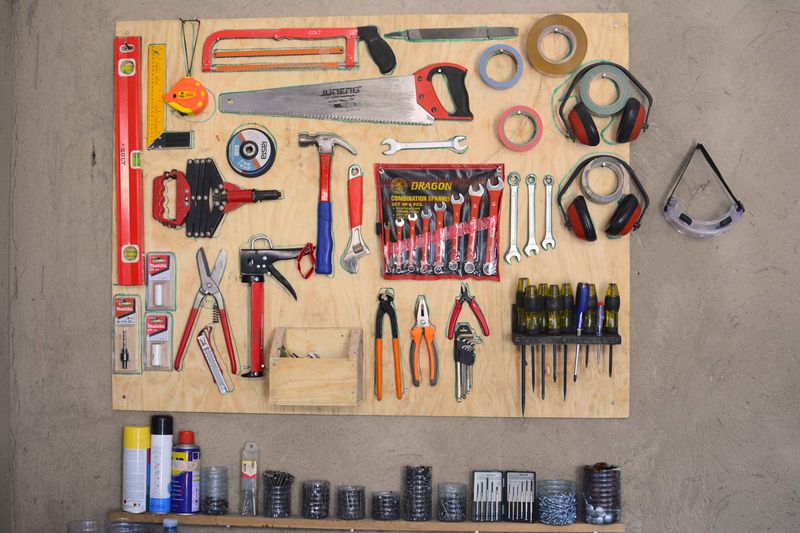
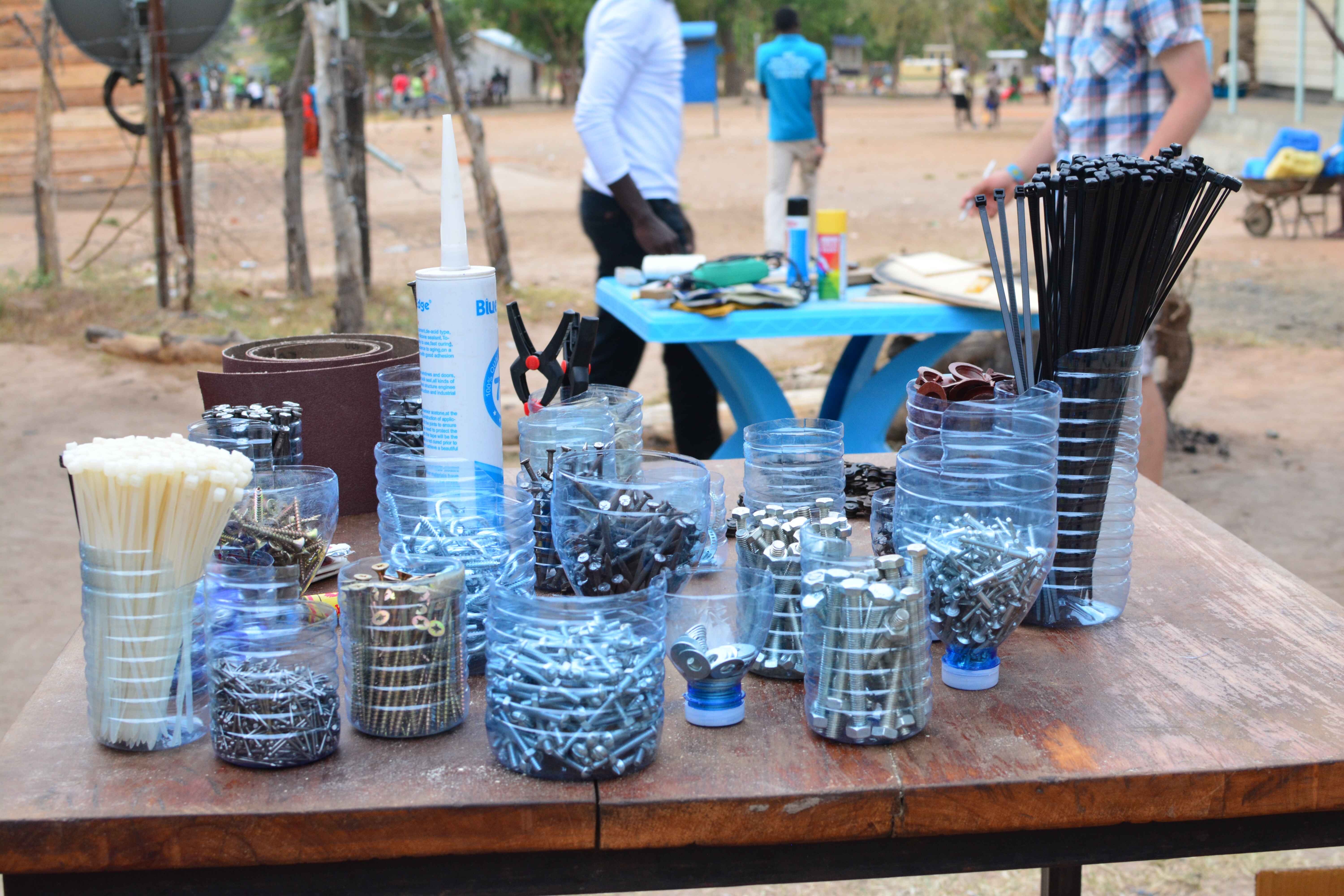
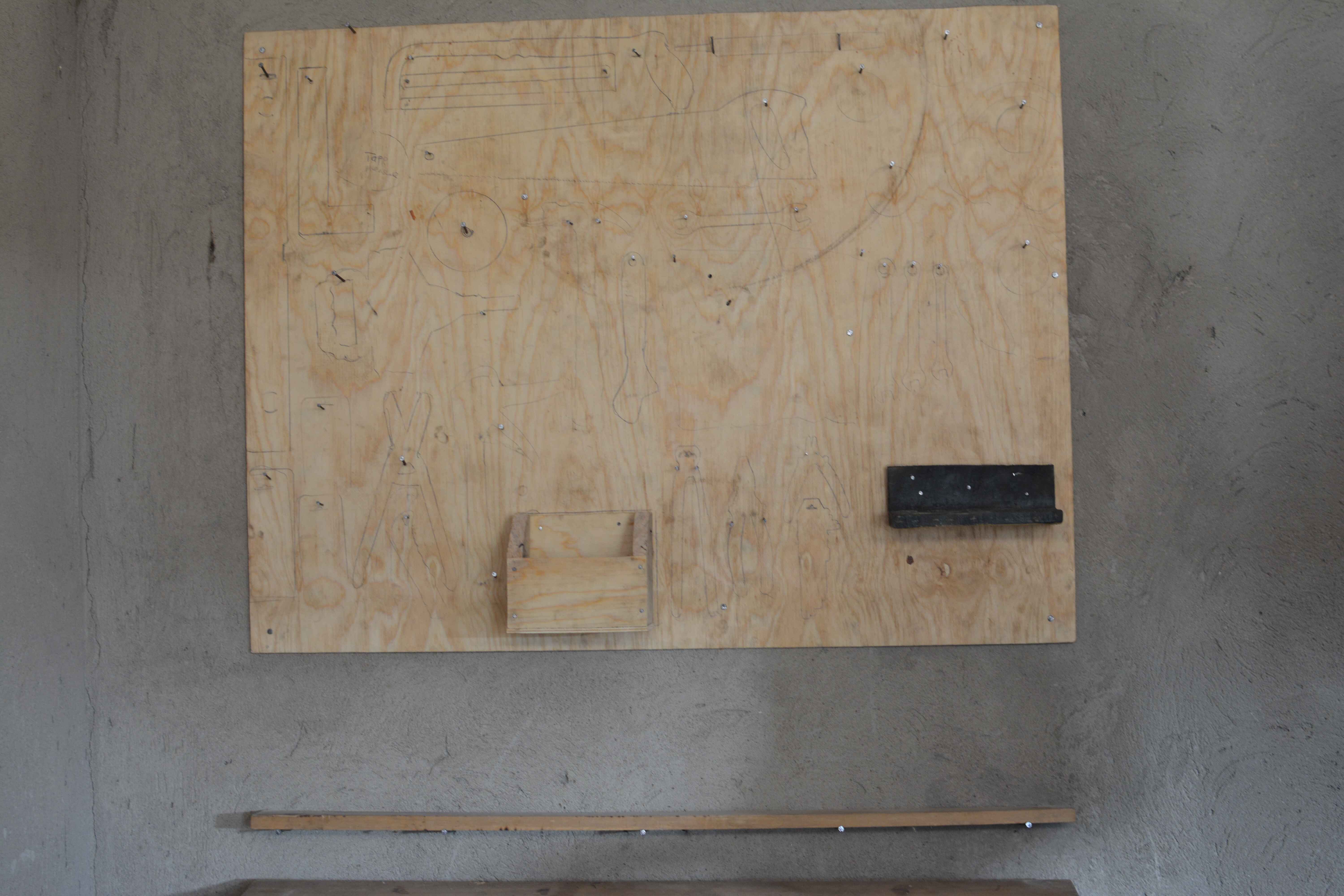
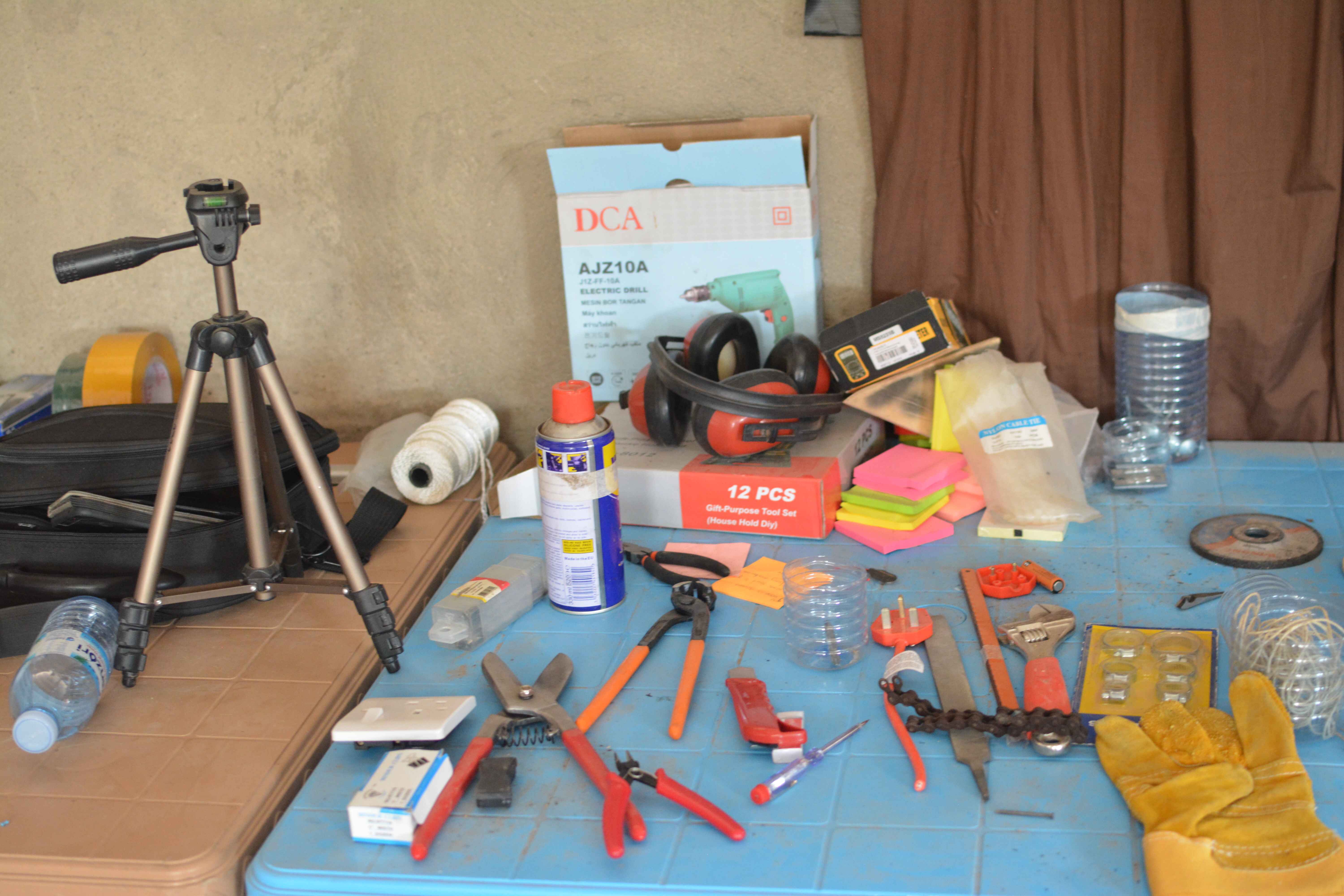
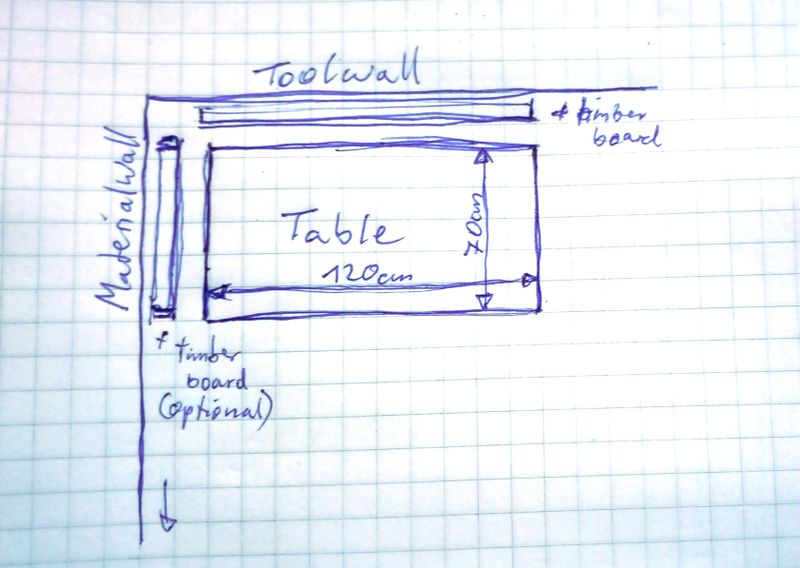
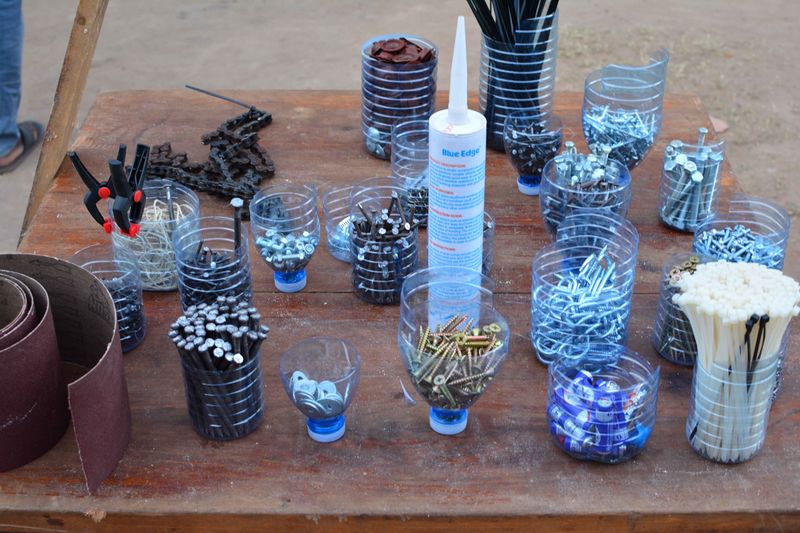
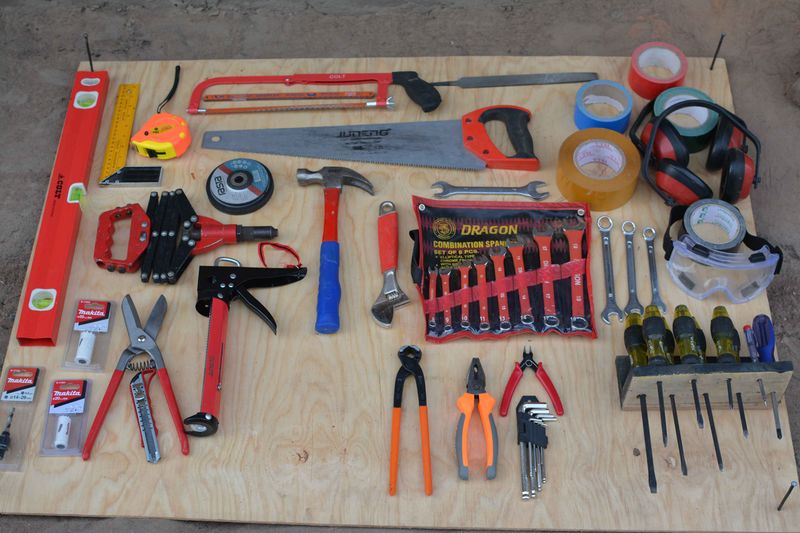
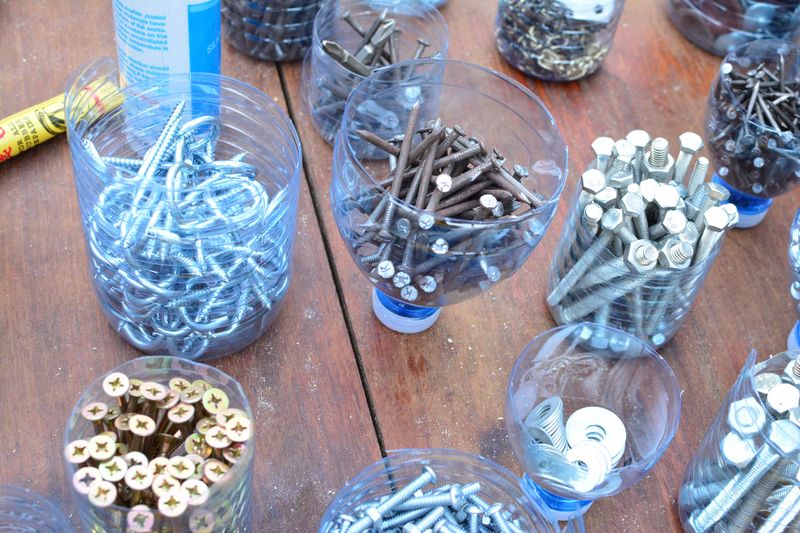
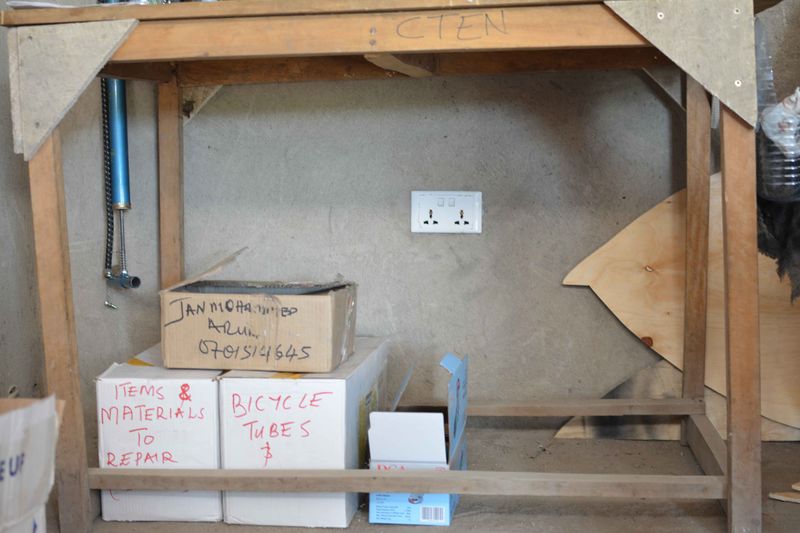
 Français
Français English
English Deutsch
Deutsch Español
Español Italiano
Italiano Português
Português